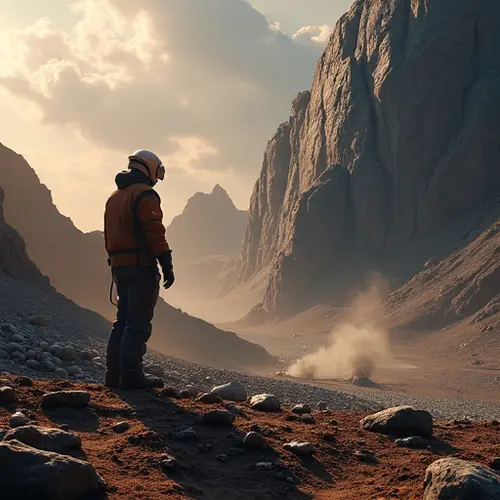
The New Space Gold Rush
Forget California - the next gold rush is happening millions of miles away. Asteroid mining, once pure science fiction, is rapidly becoming a serious commercial endeavor. With NASA's Artemis program accelerating lunar exploration and private companies like SpaceX slashing launch costs, space resource extraction is entering its practical phase. The focus? Low-gravity asteroids packed with platinum, rare earth minerals, and water ice that could revolutionize space travel and Earth's economy.
Why Asteroids?
Asteroids offer unique advantages over planetary mining. Their negligible gravity means spacecraft can land and take off with minimal fuel. NASA research shows near-Earth asteroids contain platinum group metals worth quadrillions at current prices. More importantly, water ice found in carbonaceous asteroids can be split into hydrogen and oxygen - the essential components of rocket fuel. Establishing "space gas stations" could cut interplanetary travel costs by 60%, according to United Launch Alliance studies.
2025: The Mining Frontier
This year marks significant progress in space resource extraction. NASA recently awarded contracts to four companies for lunar regolith extraction by 2026. Meanwhile, the European Space Agency's PROSPECT mission will test drilling technology on the Moon. For asteroids, companies like AstroForge plan demonstration missions targeting platinum-rich space rocks. Their approach? Compact spacecraft that process materials in orbit rather than hauling entire asteroids.
The Technology Challenge
Mining in microgravity presents unique hurdles. Traditional excavation methods fail in environments where soil behaves like fluid. NASA's experimental robotic miners use screw-driven drills and electrostatic systems to capture floating regolith particles. Thermal mining techniques show promise for water extraction - heating asteroid surfaces to vaporize ice which then gets captured in containment bags. The key innovation? AI-operated robots that can work autonomously during communication delays.
Legal Space Race
As technology advances, space law struggles to keep pace. The 1967 Outer Space Treaty prohibits national claims on celestial bodies but remains ambiguous about resource extraction. The U.S., Luxembourg, and UAE have passed domestic laws allowing private ownership of space-mined resources. This patchwork regulation creates uncertainty, with experts calling for international agreements like the proposed Moon Treaty update currently being negotiated at the UN.
Environmental Concerns
Space mining isn't without controversy. Astronomers warn increased activity could interfere with telescopes, while planetary scientists caution about contaminating pristine environments that may hold clues to life's origins. The Kessler Syndrome - a cascade of space debris from collisions - remains a serious risk in low-Earth orbit as mining operations scale up.
The Trillion-Dollar Question
When will asteroid mining become profitable? Current analysis suggests water extraction for rocket fuel will be economically viable within 10-15 years, while mineral returns to Earth face longer timelines. Morgan Stanley estimates the space economy could reach $1 trillion by 2040, with resource extraction playing a major role. As SpaceX's Starship enables heavier payloads at lower costs, the business case strengthens monthly. The ultimate goal? Making space travel self-sustaining through in-situ resources - turning asteroids into stepping stones rather than obstacles to human expansion into the cosmos.

 Nederlands
Nederlands
 English
English
 Deutsch
Deutsch
 Français
Français
 Español
Español
 Português
Português